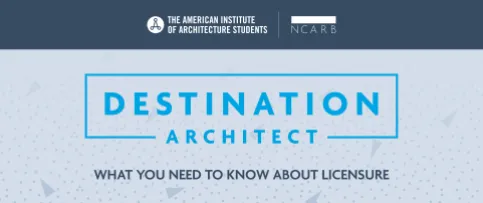Once you become licensed, you’ll have a long-term relationship with your state board. It will be your source for the latest information about practicing architecture in your jurisdiction and maintaining your license. In the meantime, your board is a resource for you now as you navigate the initial licensure process.
Meet Amy M. Kobe, CAE, Hon. AIA, the executive director of the Ohio Architects Board. She and Ohio Board members are reaching out to students, interns, and architects throughout Ohio to answer questions about the licensure process. In addition, she serves as a voice for her constituents through her participation in NCARB and AIA activities—including this year’s Licensure Task Force.
Below, Amy answers questions about how the Ohio Board works with students and interns, and how the board volunteers with national organizations to represent the interests of interns and architects.
How do you connect with students, interns, and architects in Ohio?
AK: I visit every school of architecture in Ohio just about every semester. We are a regular part of the course schedule and speak to a variety of classes—from M.Arch students in their professional practice, ethics, and contract law classes; to undergraduates in a construction class. Quite often, a board member will accompany me or go on their own and talk about their role on the board and their experiences as a registered architect.
We also attend career fairs at the schools. We set up a table with information about the registration process, Intern Development Program (IDP), and the Architect Registration Examination® (ARE®). By the time they graduate, every student in Ohio knows about the registration process and the board.
What is the role of the board in the profession?
AK: Our role is to protect the health, safety, and welfare of the public. Knowing that practitioners in the field of architecture are either licensed or on their way to being licensed, ensures that the public safety is being protected. Our job is to make sure that you as an intern or an architect understand your duties to the public and are fulfilling your ethical responsibilities to the public.
We also answer questions from architects and interns about the laws and regulations governing the practice of architecture. We serve as champions of the profession, maybe not so much in advocacy to the legislature, but if an intern has a problem, we try to solve those problems. In Ohio, we're fortunate that my staff and I are able to personally take an interest in our interns, and I think that's true for most of the state boards. We all really want to see our interns become licensed and it's really as important to us as it is to you, the intern.
How does your board work with the AIA components in Ohio?
AK: The Ohio Board has an excellent working relationship with Ohio’s state and local AIA components. One way we work together is partnering with AIA members to present continuing education seminars at state and regional conventions. For example, we have worked together to provide CE seminars on ethics. I discuss the board’s Code of Conduct, and the AIA representative discusses the AIA’s Code of Ethics. I have also done many presentations at local chapter meetings. It is a mutually beneficial partnership.
How does your board collaborate with NCARB?
AK: Several years ago, the Ohio Board made a strategic decision to increase Ohio’s presence at the national level by getting more involved with NCARB. Not only were board members encouraged to volunteer for NCARB committees, the board made it clear I should volunteer too. As a result, we feel that Ohio’s voice is being heard at the national level and we can positively influence policy decisions.


